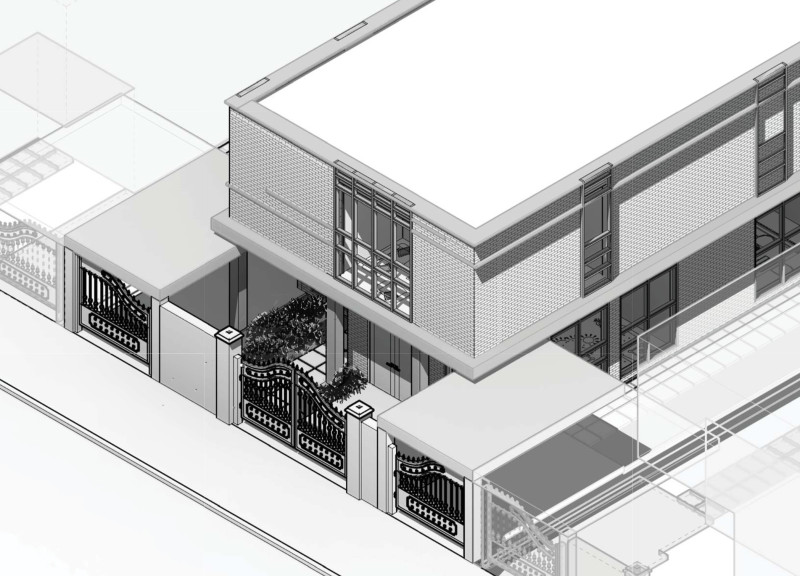5 key facts about this project
This particular project serves a multifaceted purpose, accommodating various activities that aim to meet the diverse needs of its community. The architecture has been conceptualized to facilitate both individual pursuits and communal gatherings, providing adaptable spaces that can evolve with the users’ changing needs. The seamless flow from one area to another encourages natural movement and interaction among occupants, making it a hub of activity and connection.
As you explore the project's architectural plans, different sections reveal thoughtful spatial organization, enabling a clear demarcation of public and private areas while maintaining an inviting atmosphere. The main entrance, marked by a welcoming facade, leads visitors into expansive communal areas designed for gatherings and events. The use of large windows throughout the building enhances natural light penetration, reinforcing the connection between interior spaces and the natural world outside.
The design incorporates various distinctive architectural elements that illustrate the architect's innovative approach. For instance, the building features a series of cantilevered sections that provide shade to outdoor spaces while also offering dramatic views of the landscape. This not only enhances the aesthetic appeal but also serves practical purposes, such as energy efficiency and protection from the elements. The choice of materials, including a combination of concrete, glass, and timber, speaks to both durability and warmth, fostering an inviting environment. The concrete provides a strong, solid base, while glass allows for transparency and light, and timber introduces a natural, tactile quality that resonates with users.
Unique design approaches come to the forefront in areas such as sustainable practices integrated into the architecture. The project incorporates features like green roofs and rainwater harvesting systems, which not only reduce its ecological footprint but also create educational opportunities for the community. These elements are more than just functional; they represent a conscious effort to engage occupants with environmental awareness and responsibility, enhancing their connection to the surrounding landscape.
Moreover, the project’s architectural design emphasizes a strong relationship between indoor and outdoor spaces, promoting well-being and a connection to nature. Landscaped outdoor areas complement the architecture, offering spaces for relaxation, recreation, and social interaction. Pathways connecting different sections of the project are thoughtfully laid out, fostering an intuitive flow and making navigation simple for all visitors.
In terms of accessibility, the design prioritizes inclusivity by ensuring that all users can engage with the facilities without barriers. This is reflected in features such as ramps, wide corridors, and modifiable spaces that accommodate a variety of activities and gatherings.
Through the lens of this architectural project, it is evident that careful consideration has been given not only to the functional requirements but also to the broader implications of design. The project showcases a commitment to creating environments that are not only beautiful but also enhance the quality of life for users and the community at large.
For those interested in delving deeper into the nuances of this impressive architectural project, a closer examination of the architectural plans, sections, and detailed designs will provide valuable insights into the thoroughness and thoughtfulness of the project. The innovative architectural ideas presented here highlight the potential for creating spaces that resonate with their users and contribute positively to the urban fabric, inviting exploration and reflection.
























